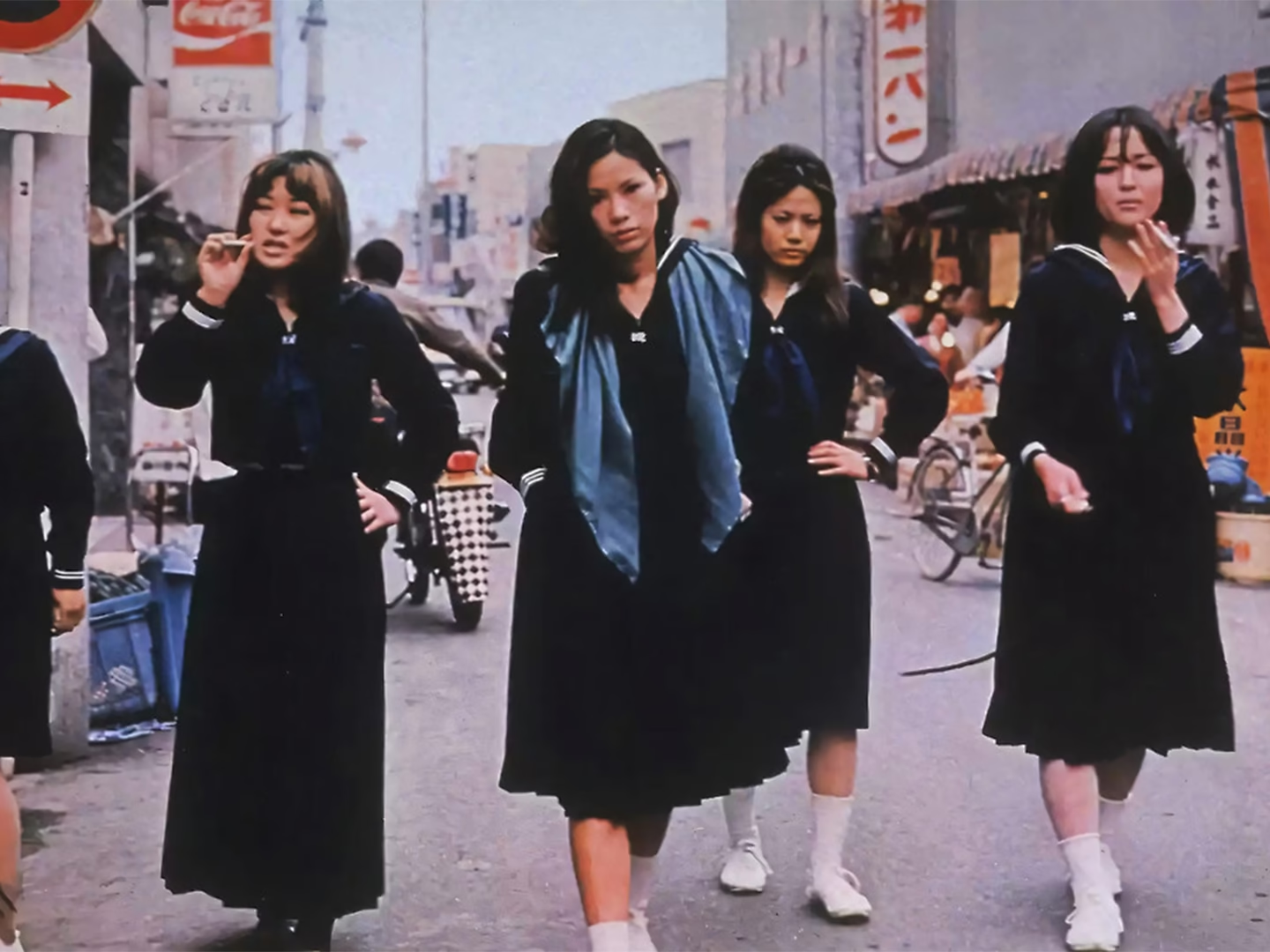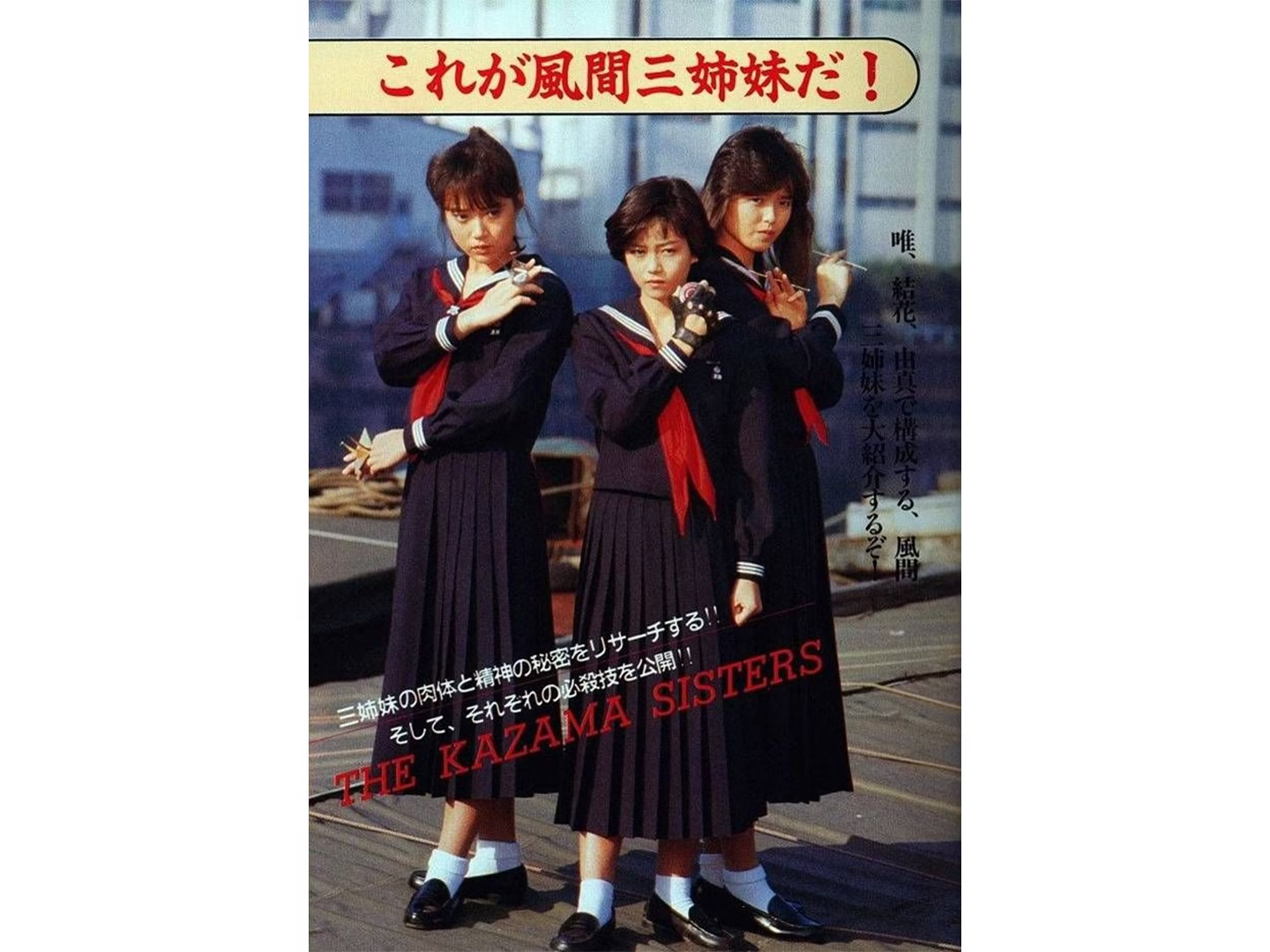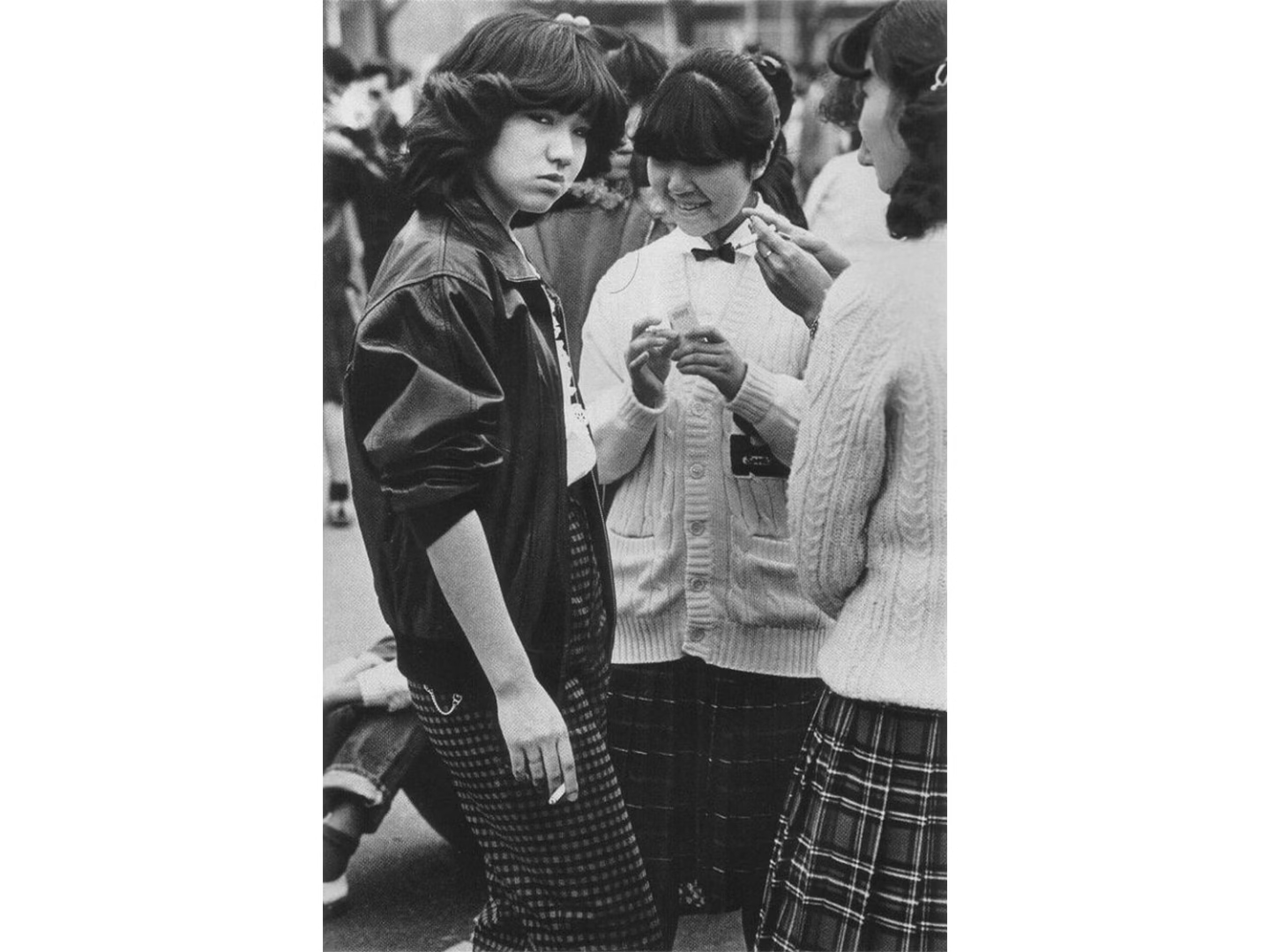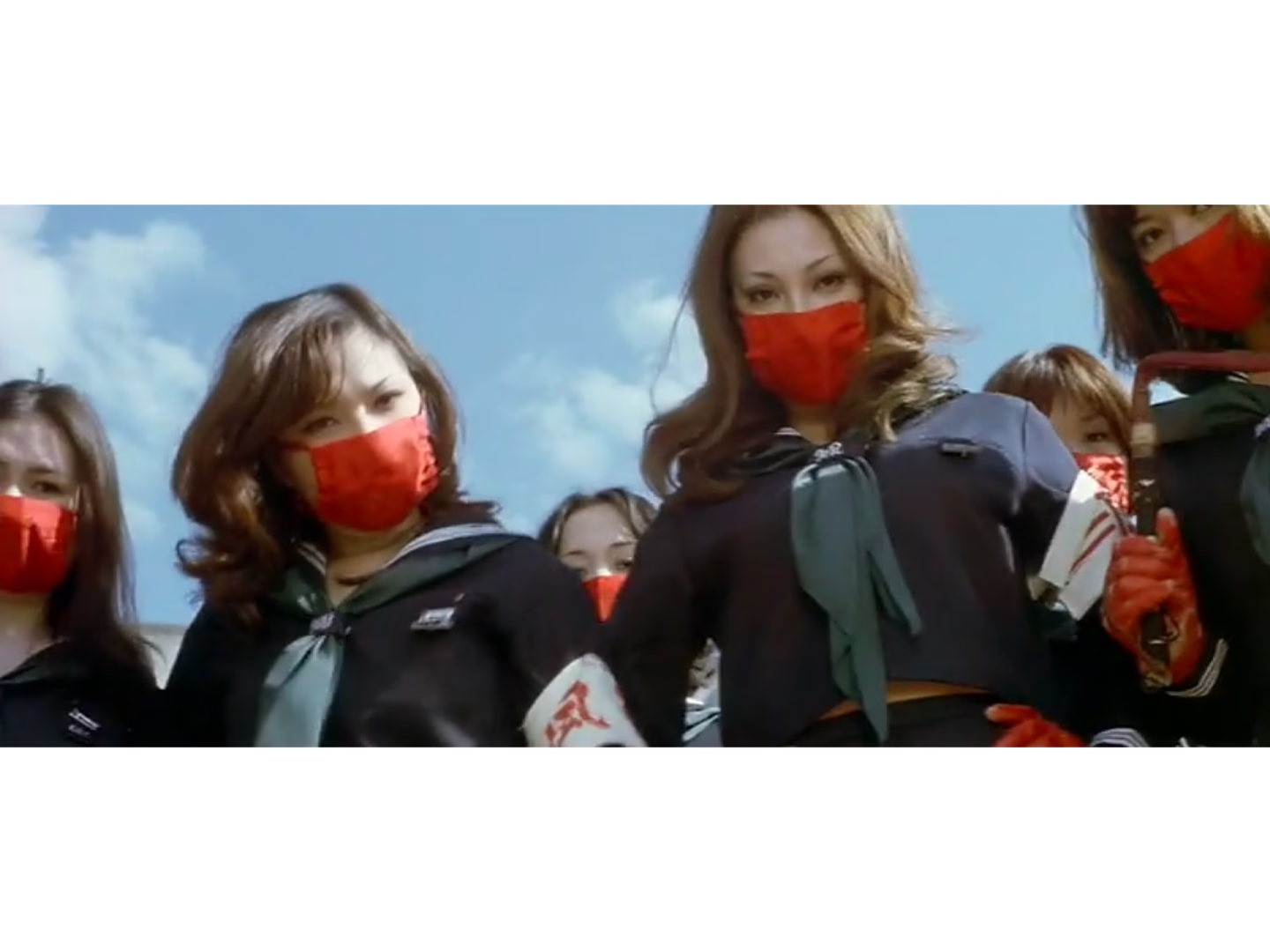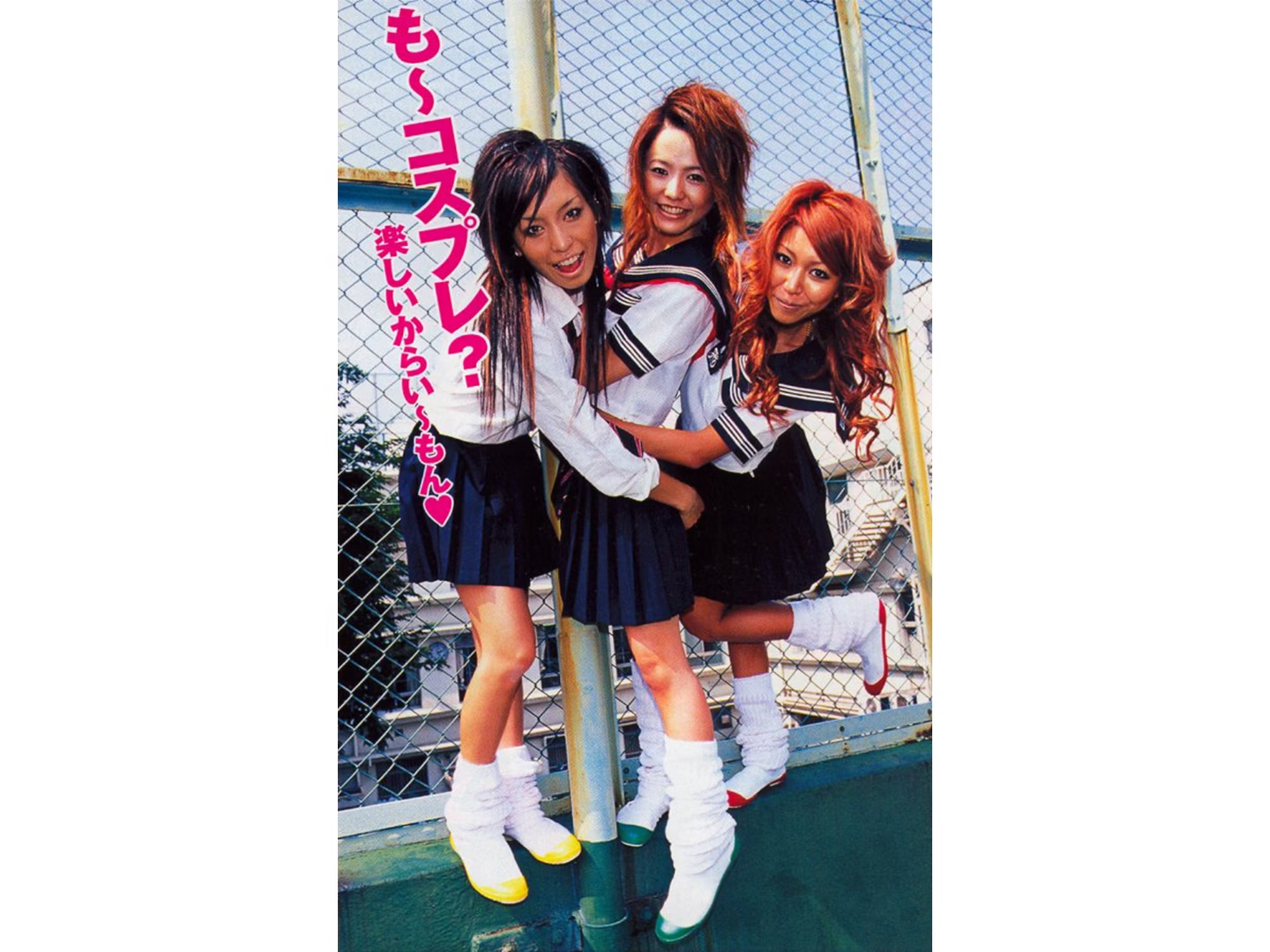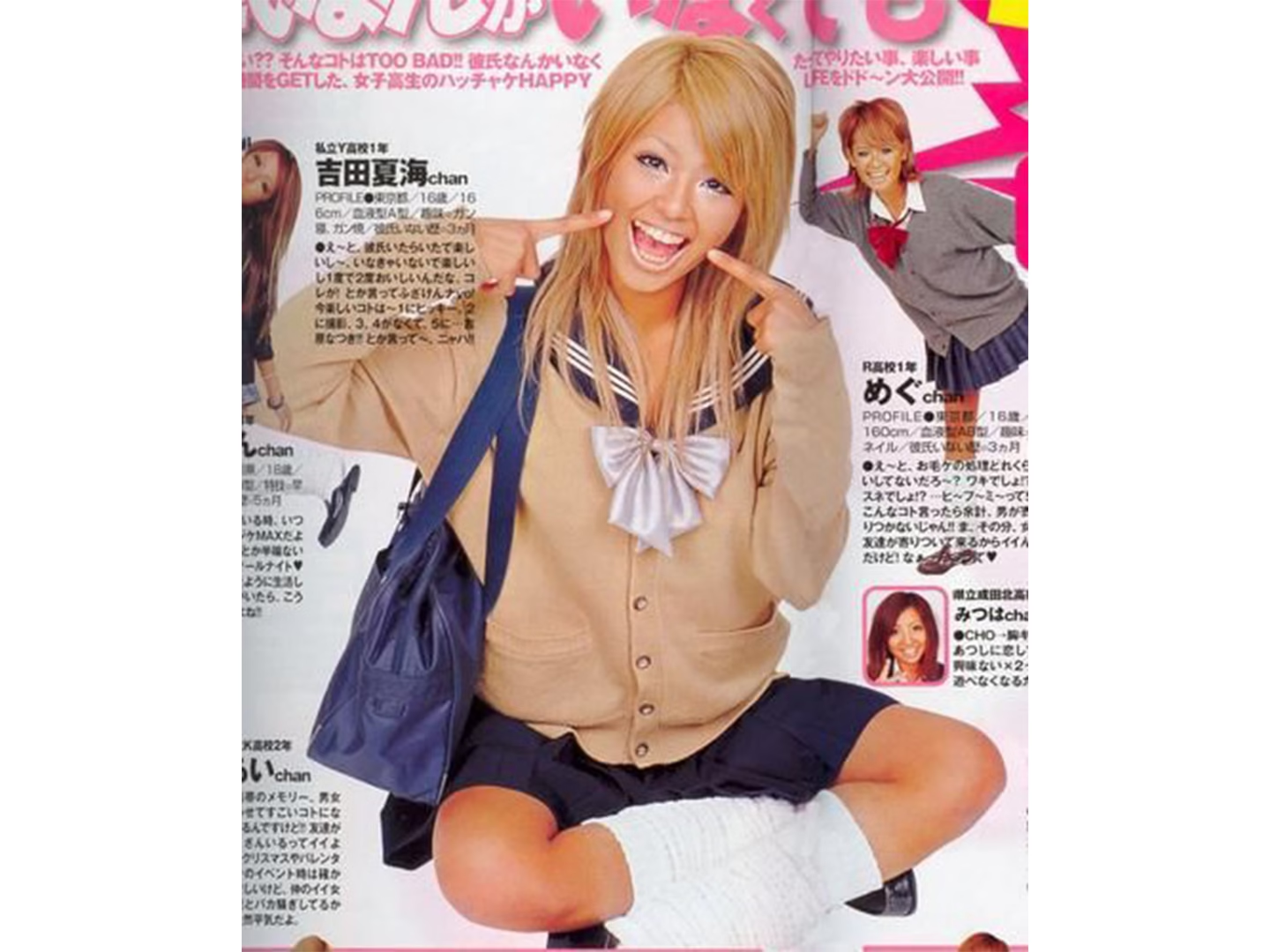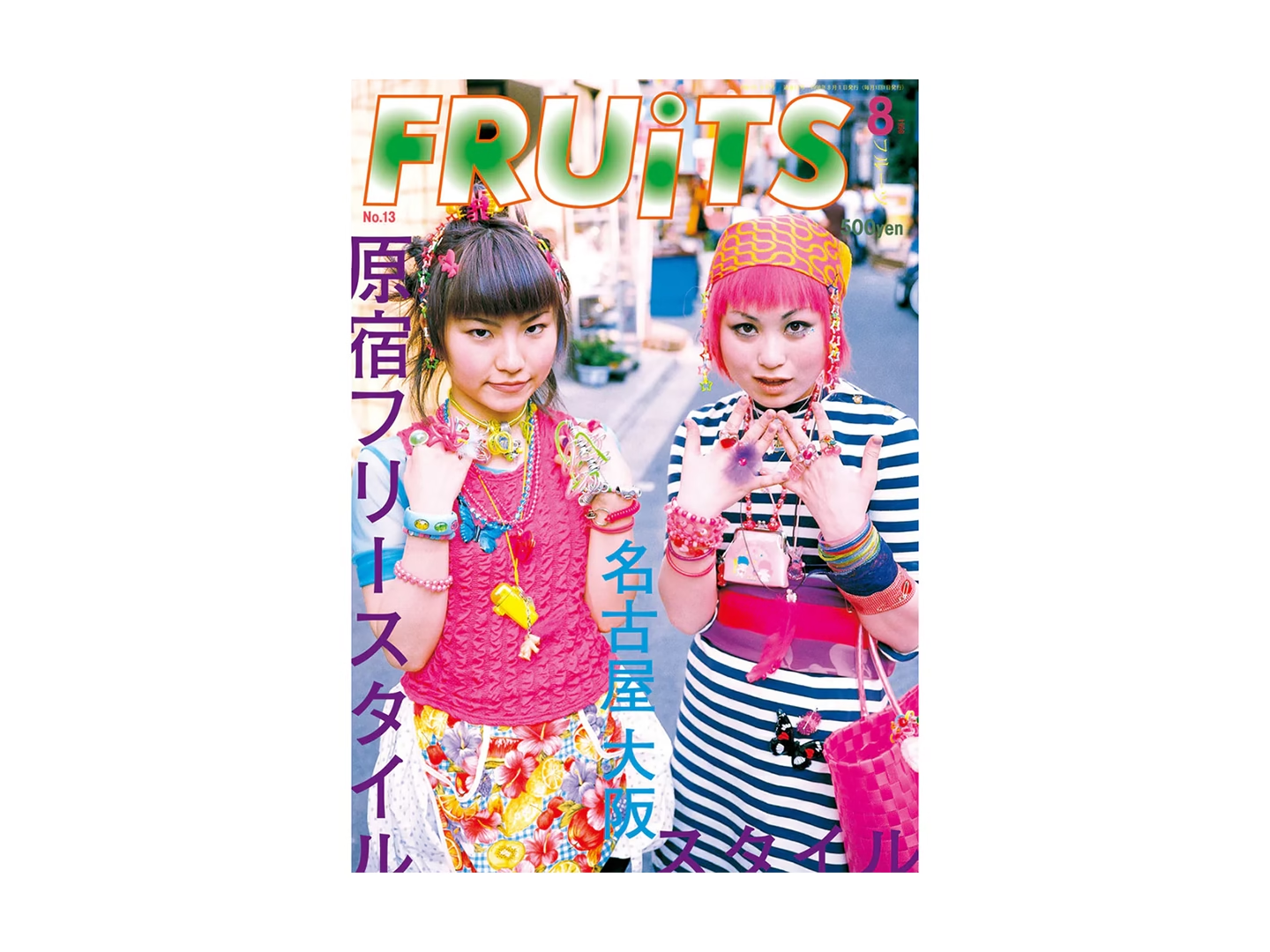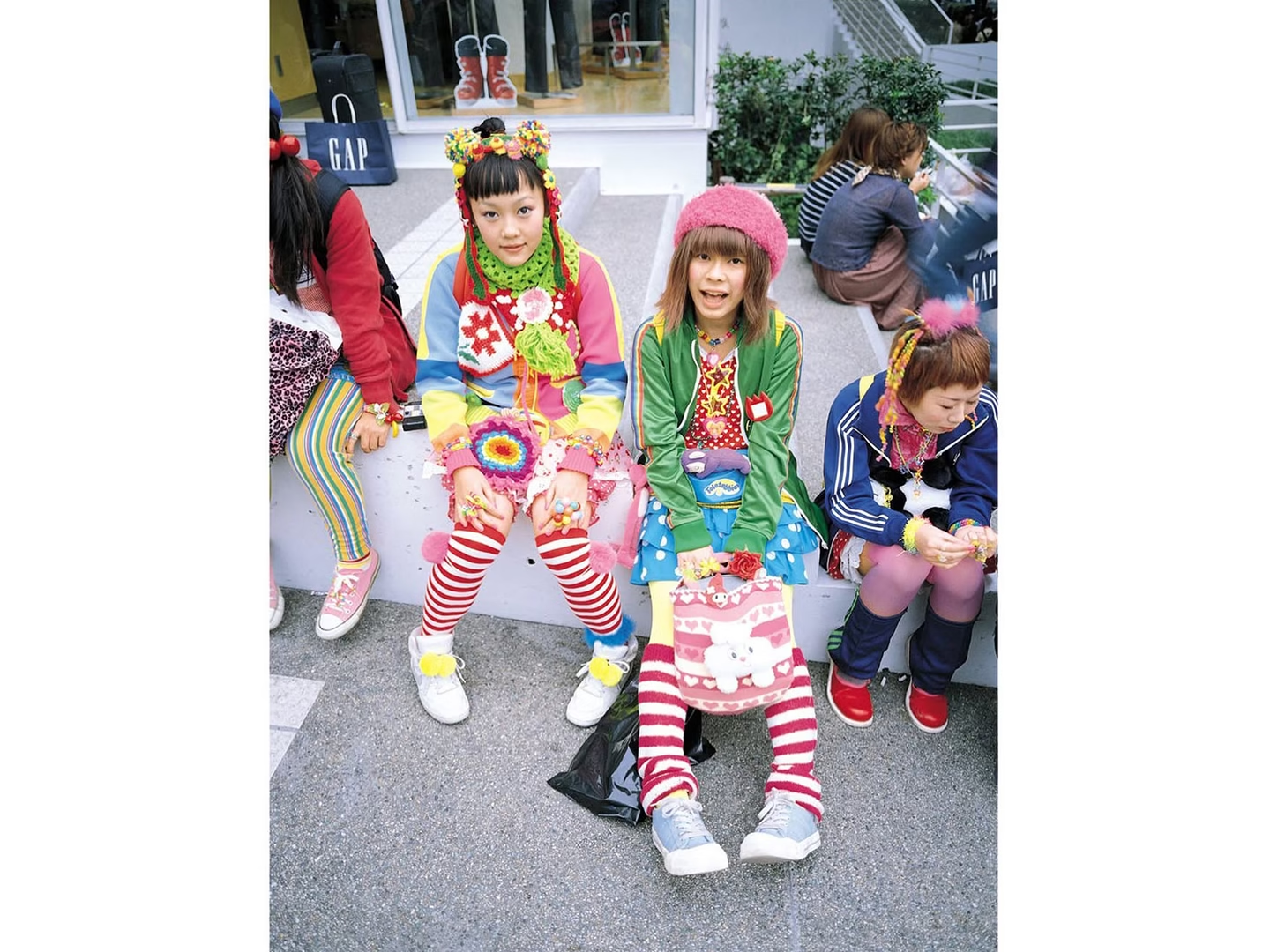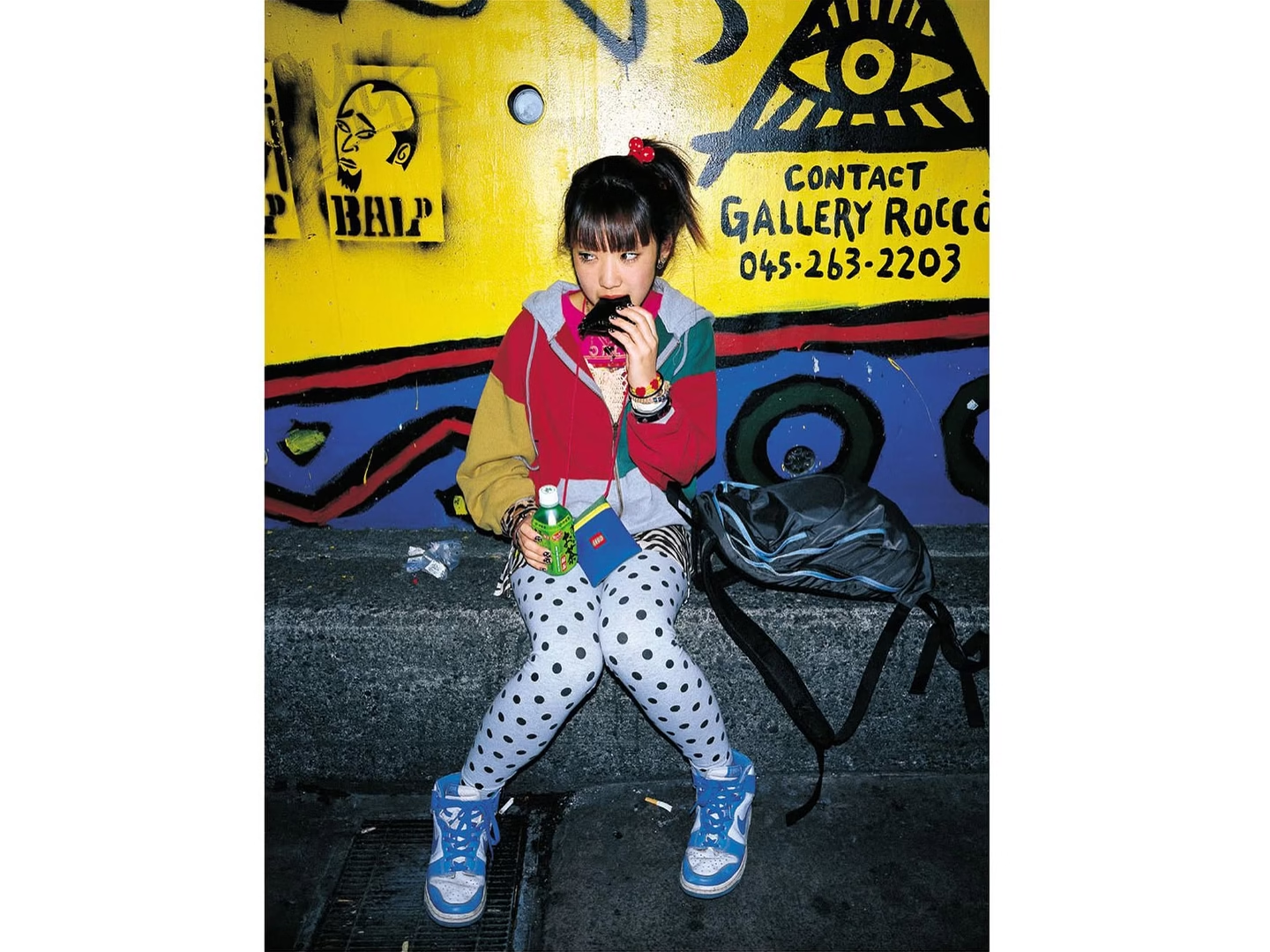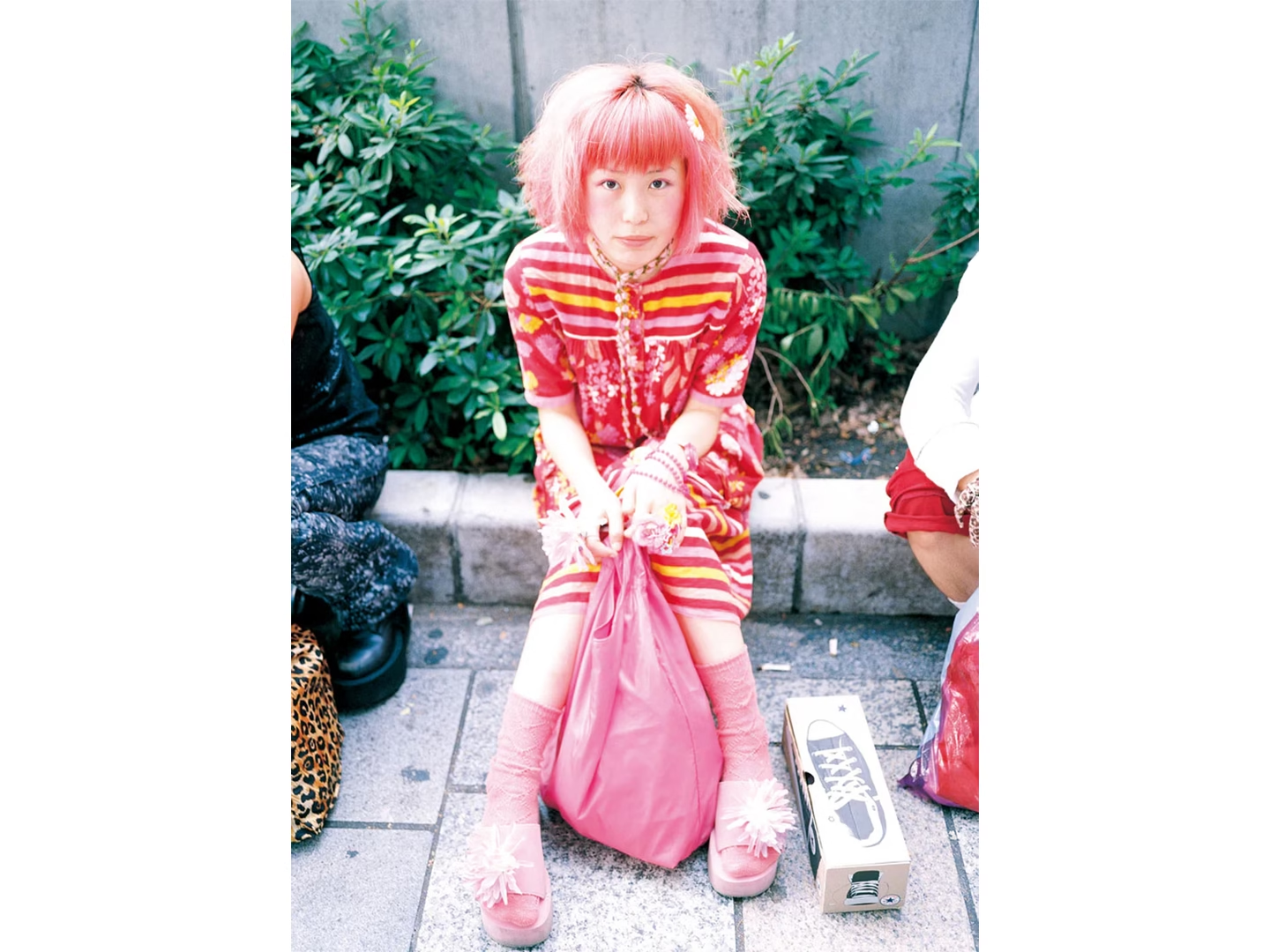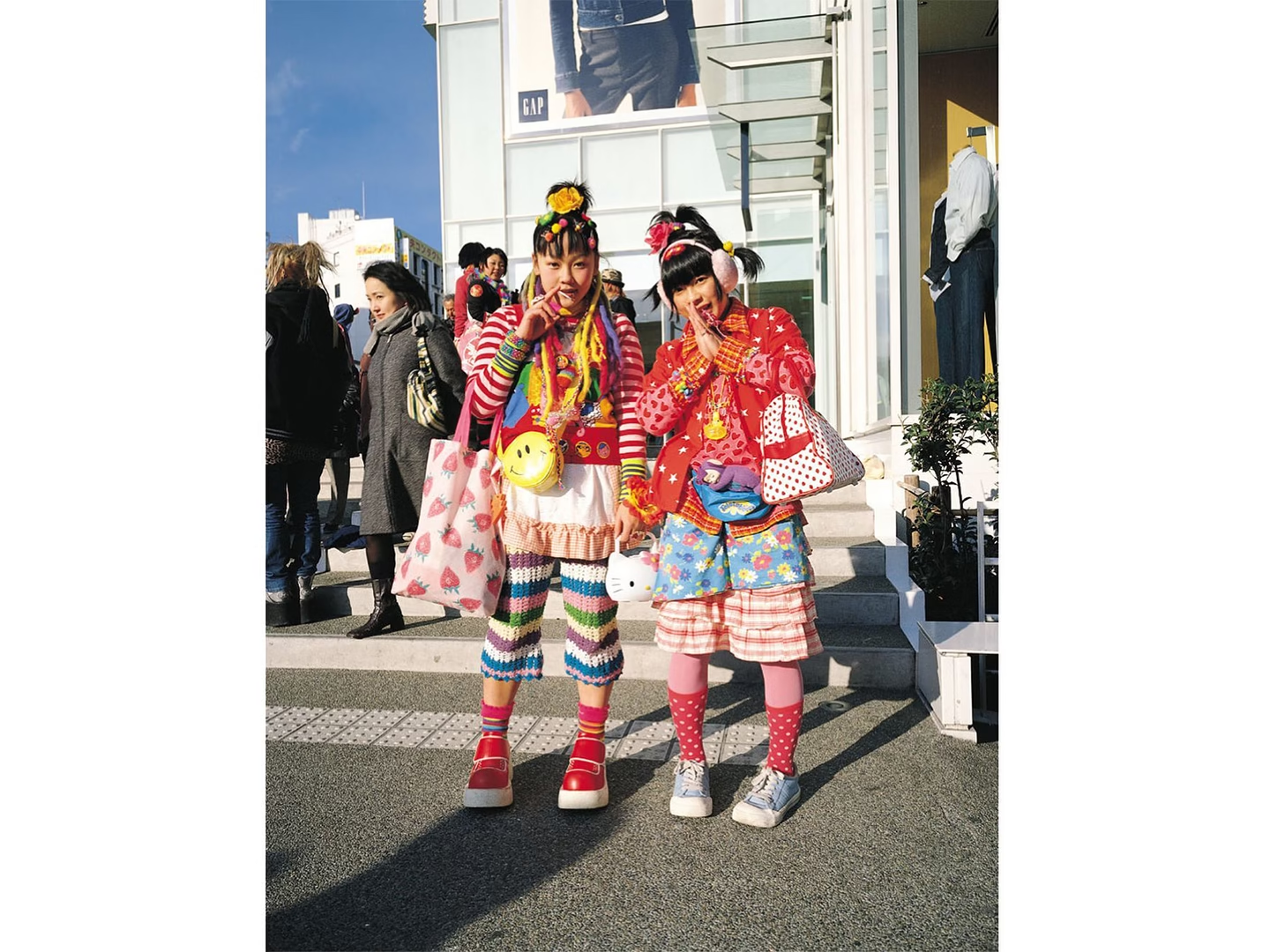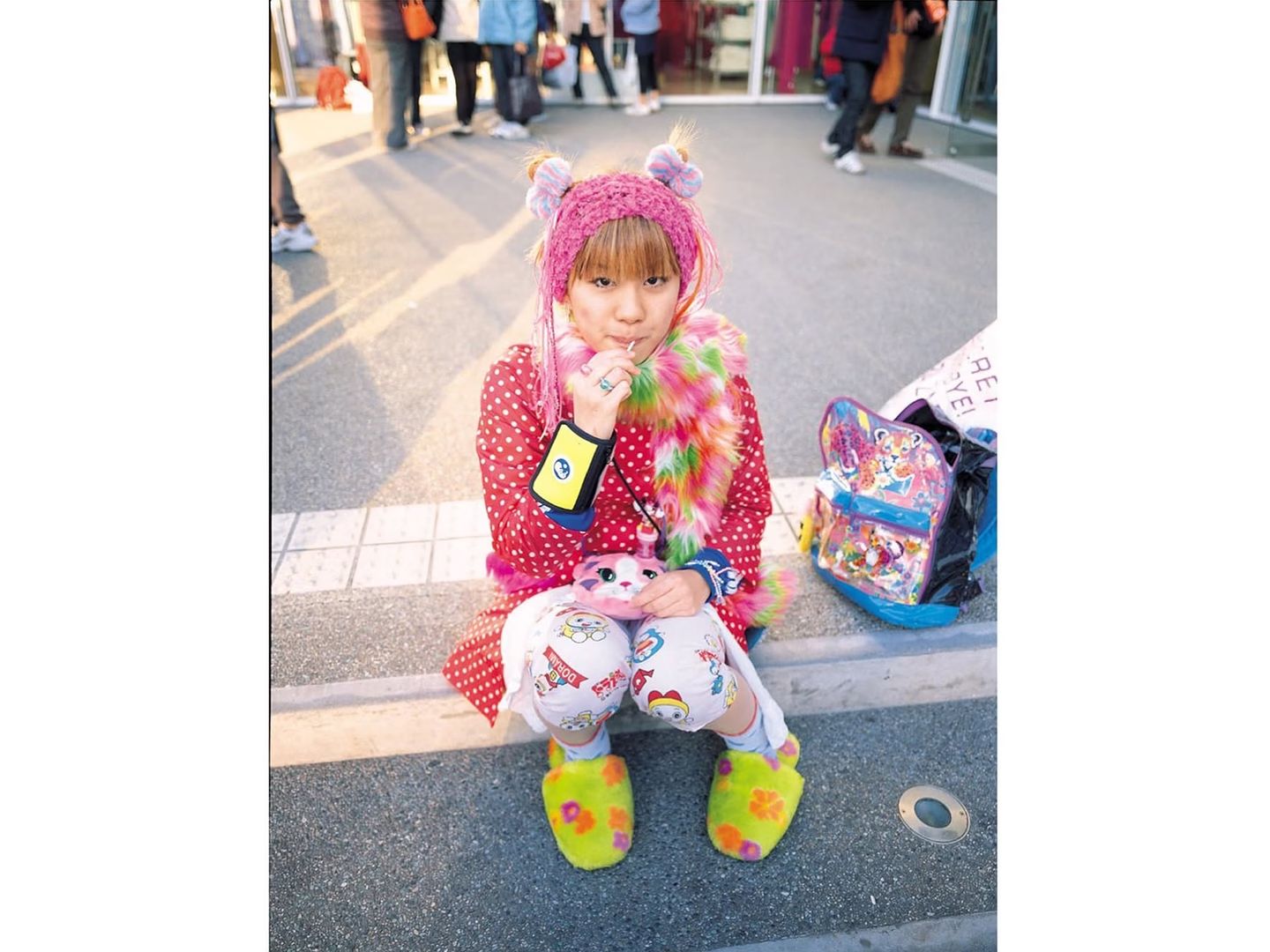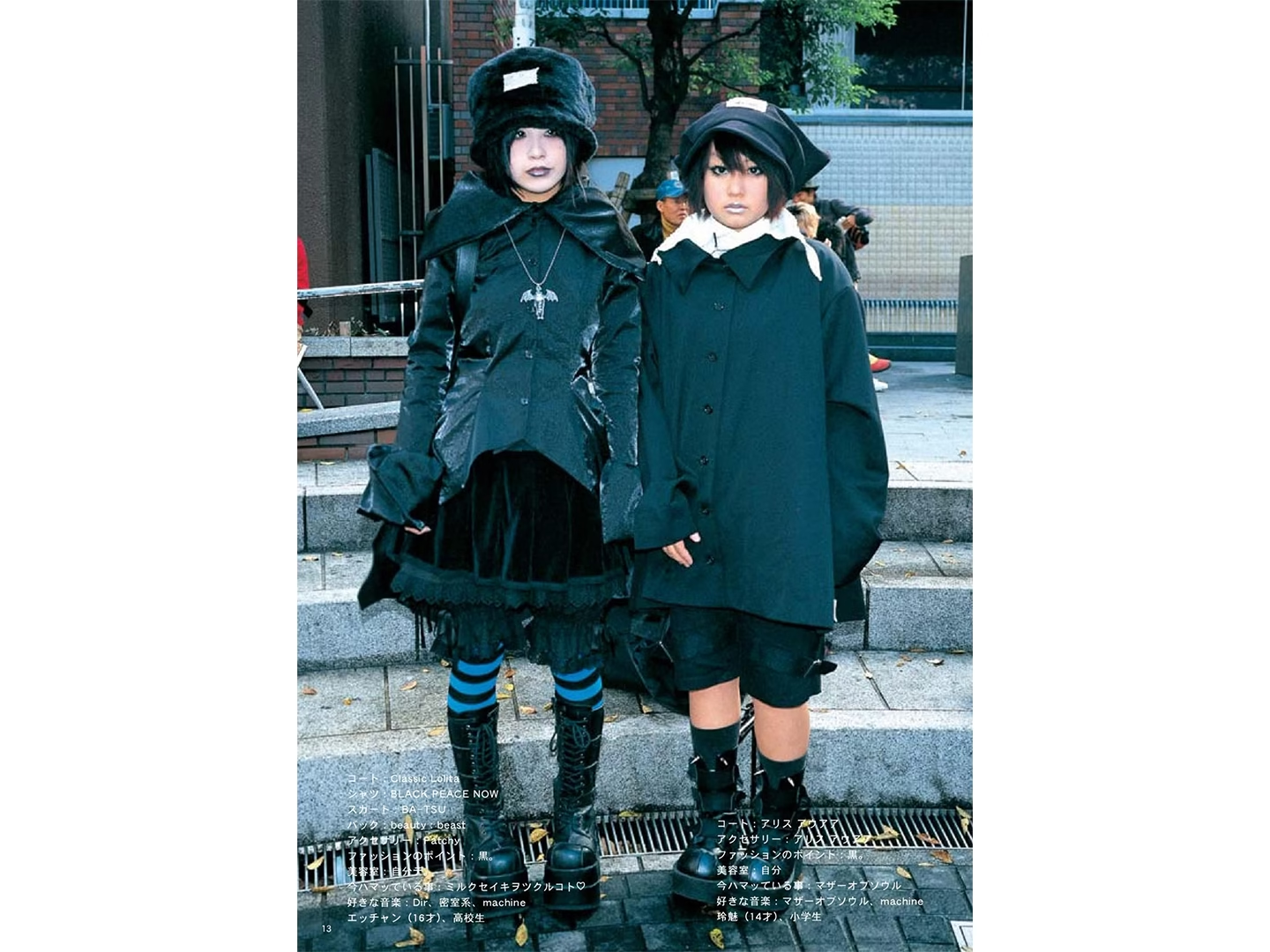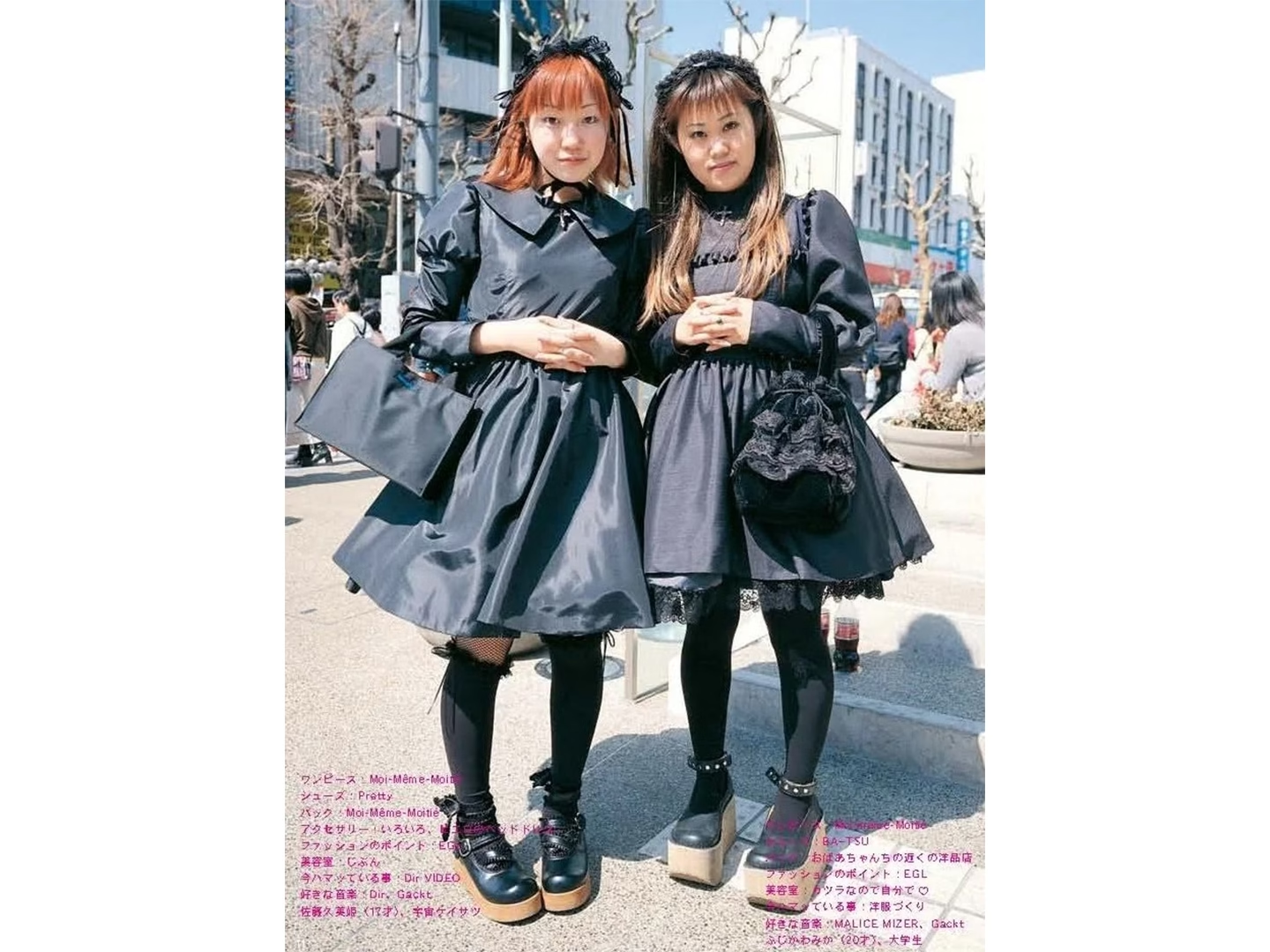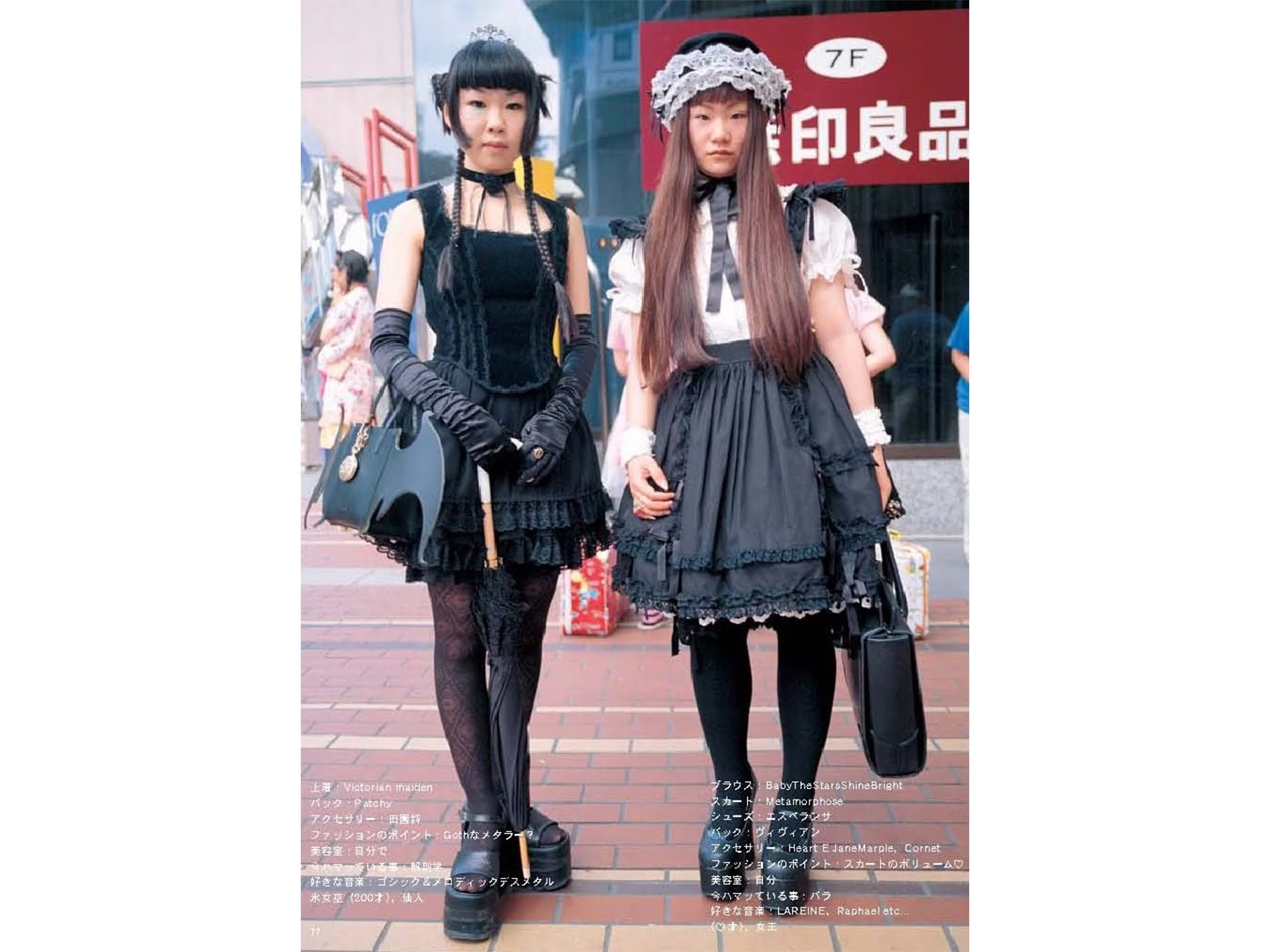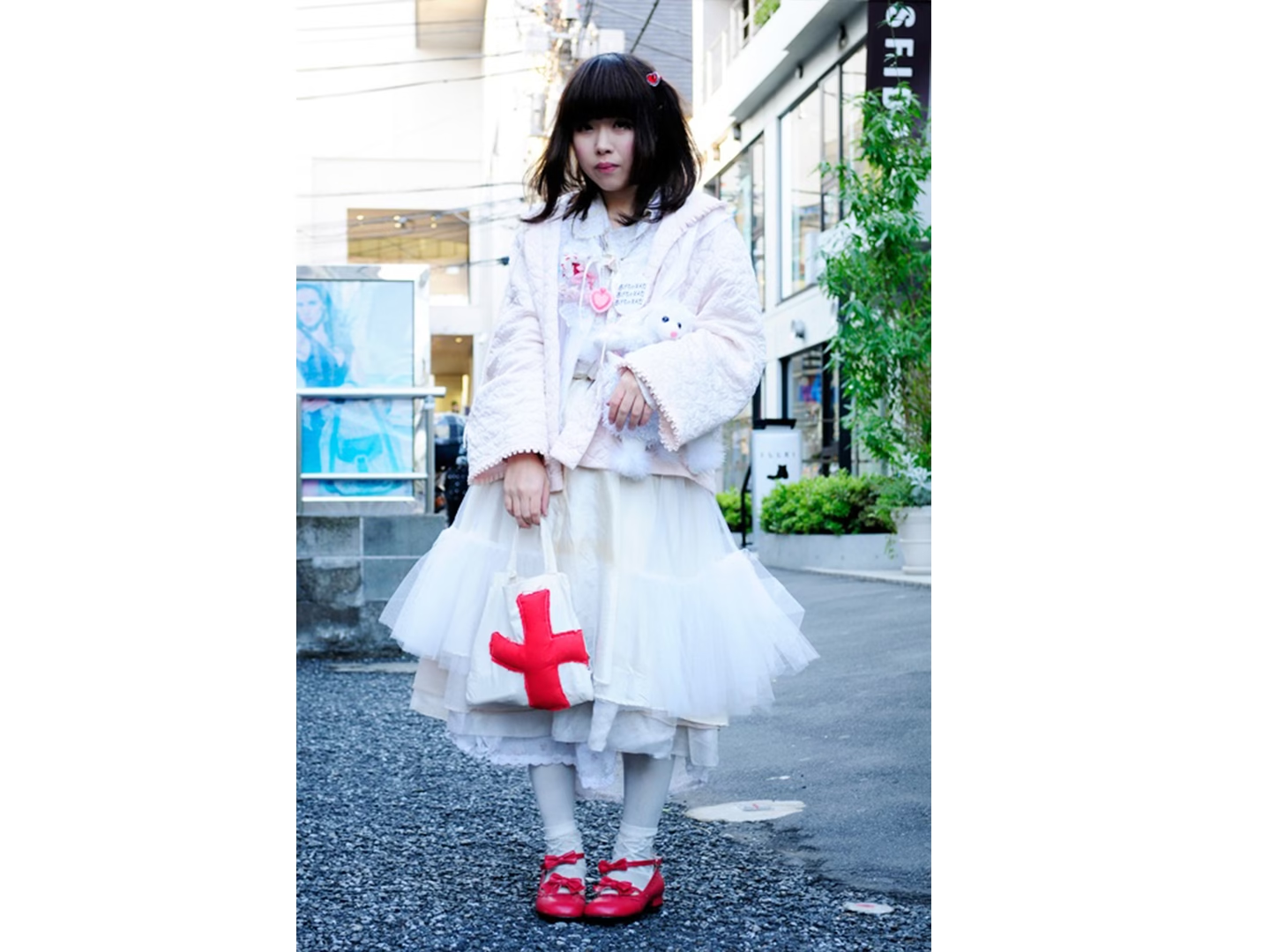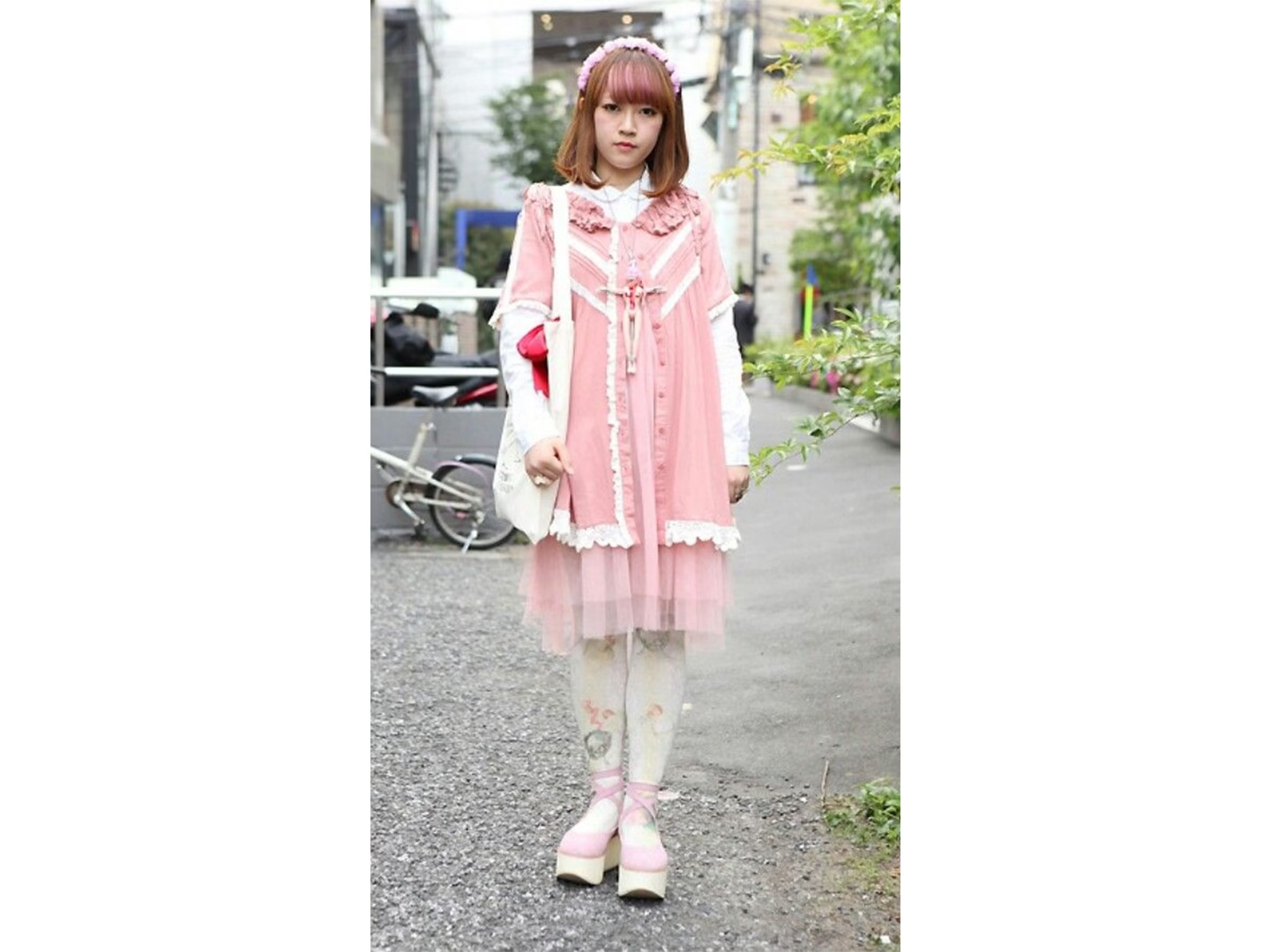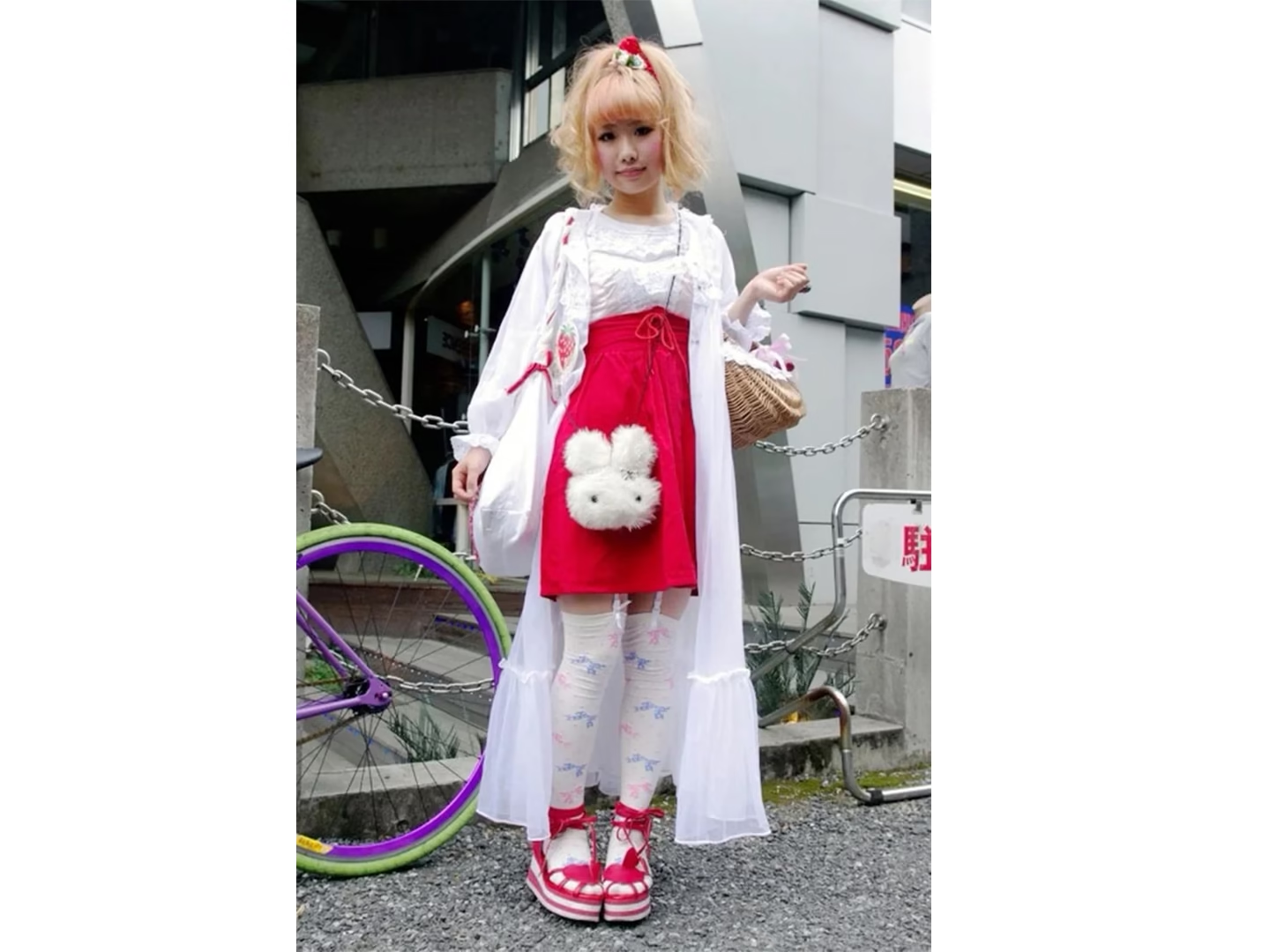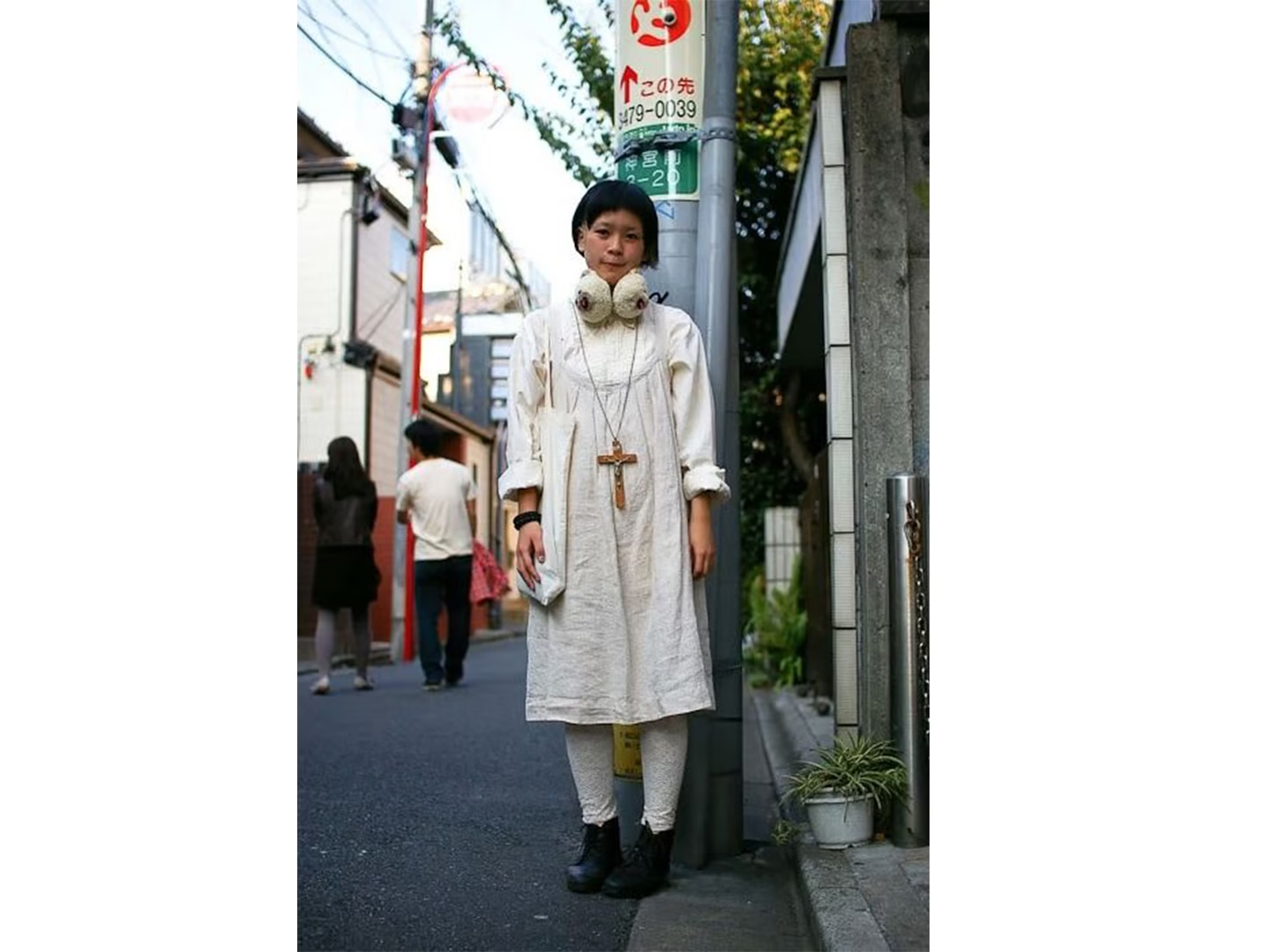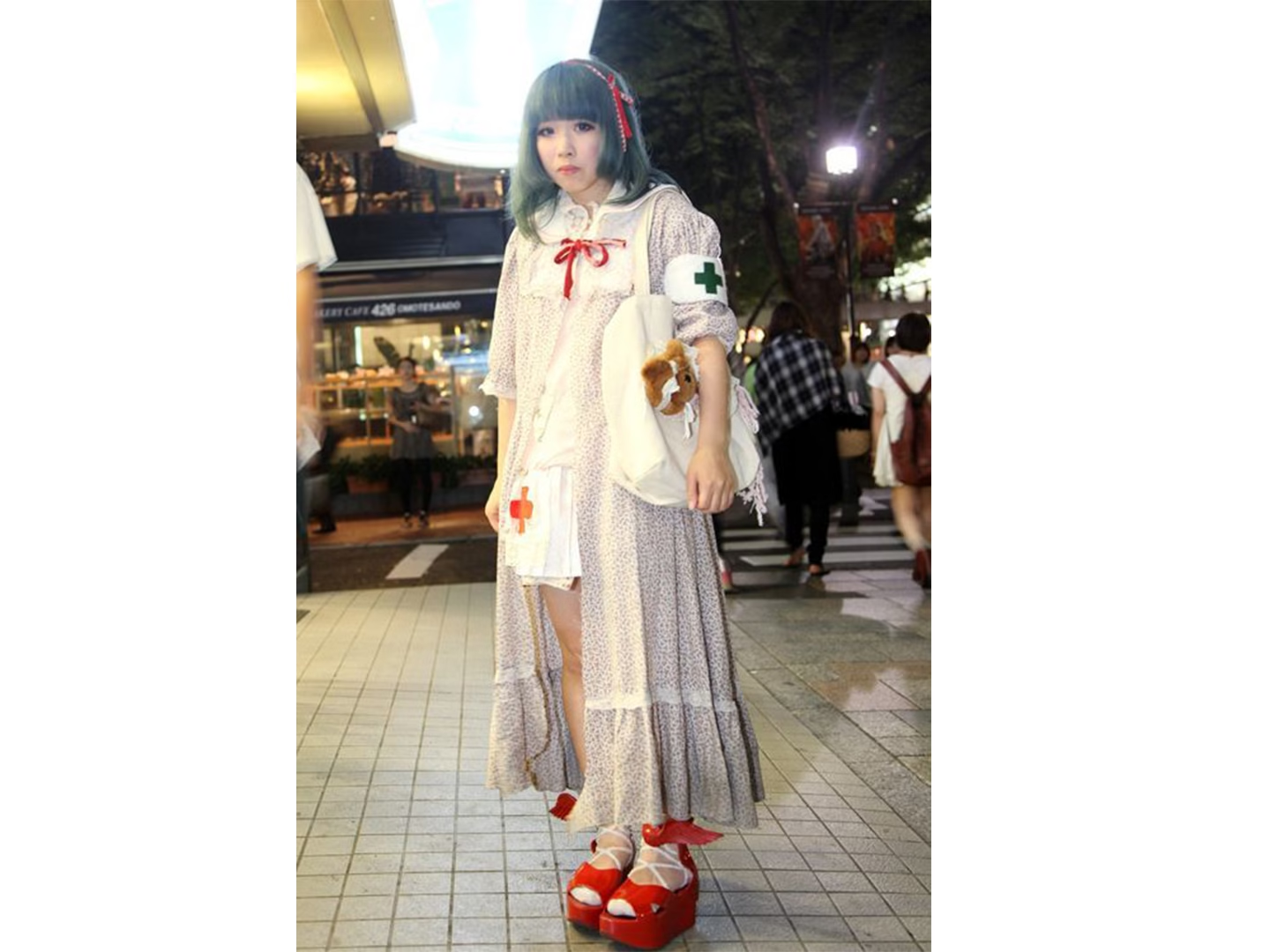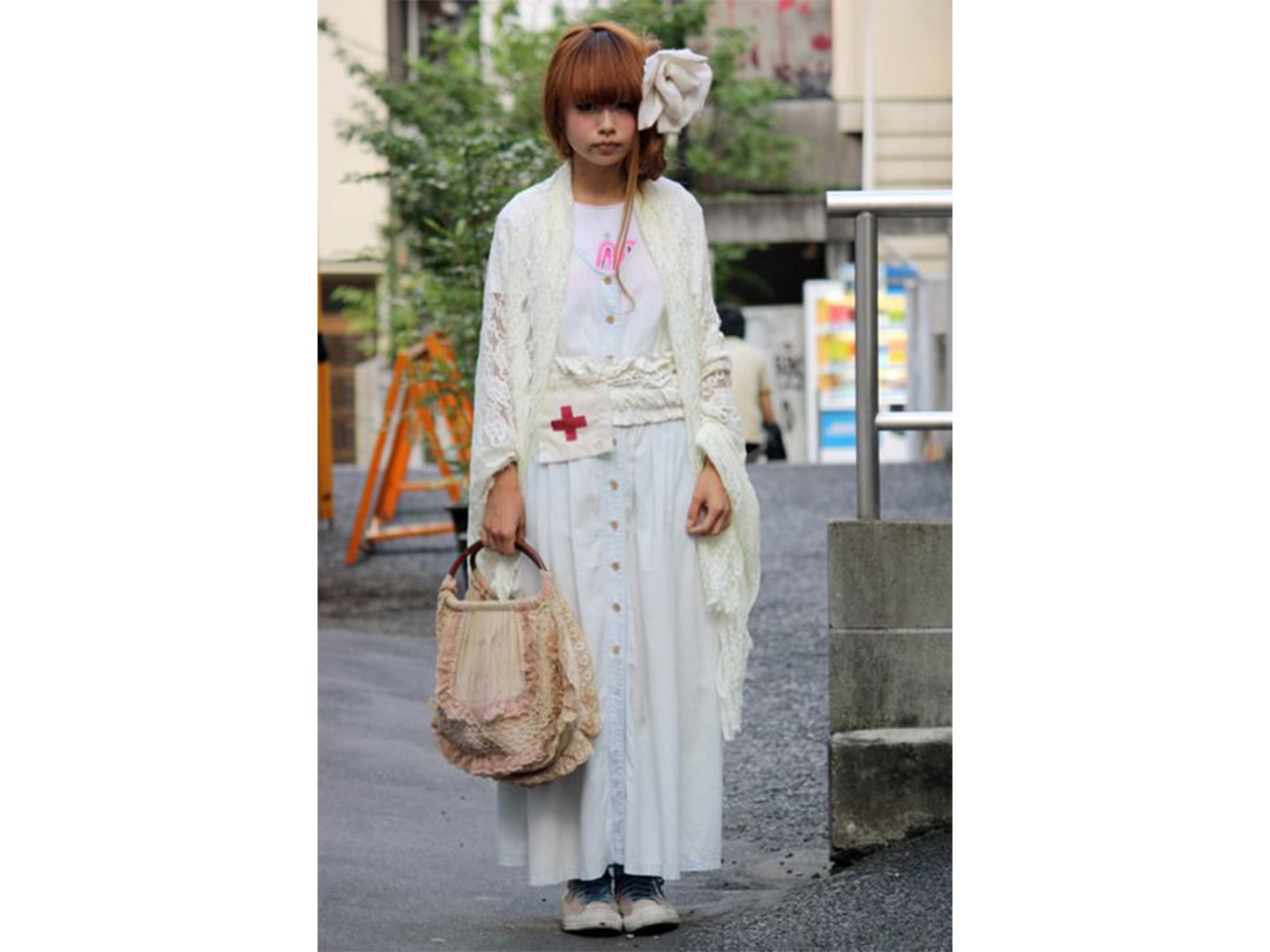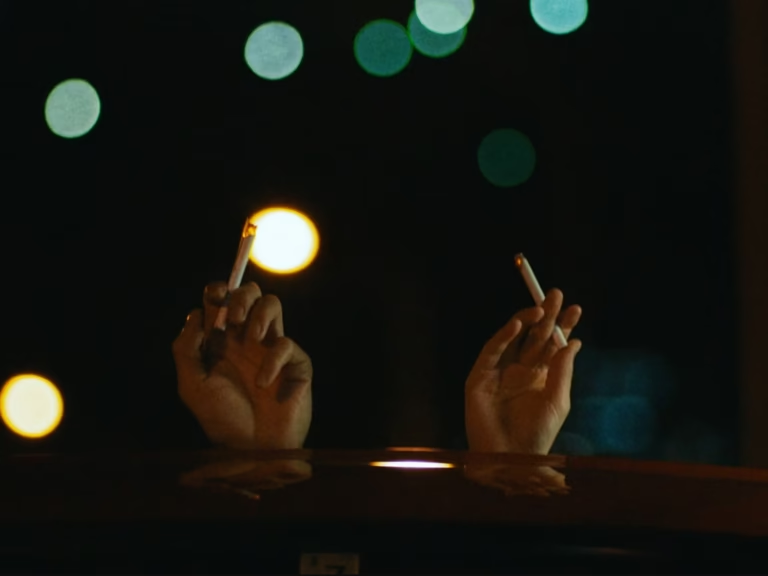WOMEN-LED MOVEMENTS
As a follow-up to our previous look at lesser-known Japanese subcultures, this second article focuses on movements led by women. Each group developed its own aesthetic and way of appearing in public, shaped by the time and space in which it emerged.
1. Sukeban
Rebellious uniforms, long skirts, group solidarity
First seen in the late 1960s and widely visible through the 1970s, sukeban—loosely translating to “girl boss”—described all-female youth gangs known for their highly customized school uniforms. Members wore ankle-length skirts, rolled-up sleeves, long or permed hair, and coats embroidered with slogans. Their visual style became symbolic of defiance against social expectations and school authority, and was later echoed in manga and films.
2. Kogyaru
Short skirts, loose socks, tanned look
In the 1990s, kogyaru fashion reworked the standard school uniform into a youth-centered, urban style. Participants lightened their hair, shortened their skirts, wore oversized sweaters, and adopted loose socks as a signature detail. Based primarily in Shibuya, the look represented a shift toward consumer-driven teenage expression, often linked to changing gender roles and critiques of materialism.
3. Decora
Bright colors, layered accessories, playful motifs
By the late 1990s, Decora had become a distinct Harajuku style defined by its use of layered plastic clips, toys, stickers, and colorful fashion items. Influenced in part by idol Tomoe Shinohara, the style rejected minimalism in favor of maximalist self-decoration. It gained visibility through FRUiTS Magazine and became a recognizable symbol of Harajuku street culture.
4. Gothic Lolita
Victorian silhouettes, dark lace, modest theatricality
Emerging in the early 2000s, Gothic Lolita developed as a dark, romantic counterpart to the broader Lolita fashion trend. Drawing on Victorian and Rococo aesthetics, participants wore petticoats, lace collars, parasols, and carefully structured dresses. Brands like Moi-même-Moitié and Baby, The Stars Shine Bright helped define the look. Though rooted in modesty, the style offered a highly curated form of self-expression, especially among those in the visual kei and Harajuku communities.
5. Cult Party Kei
Layered vintage, soft pastels, ethereal styling
In the early 2010s, Cult Party Kei took shape around a small Koenji boutique called Cult Party, later renamed The Virgin Mary. The style emphasized sheer layers, vintage nightwear, lace, and accessories with religious or handmade motifs. It shared elements with Dolly Kei and Mori Kei, but offered a more fragile, ethereal tone. Though niche, it was a visible presence in Tokyo’s fashion subculture during its peak, often featured in blogs and Japanese street-style media.
